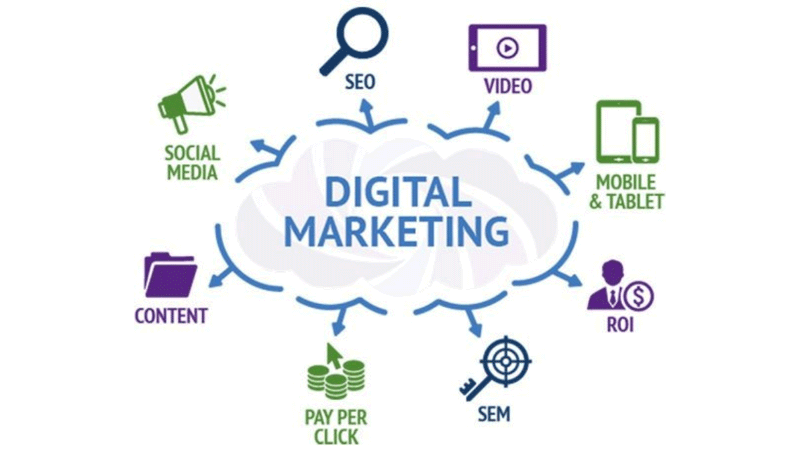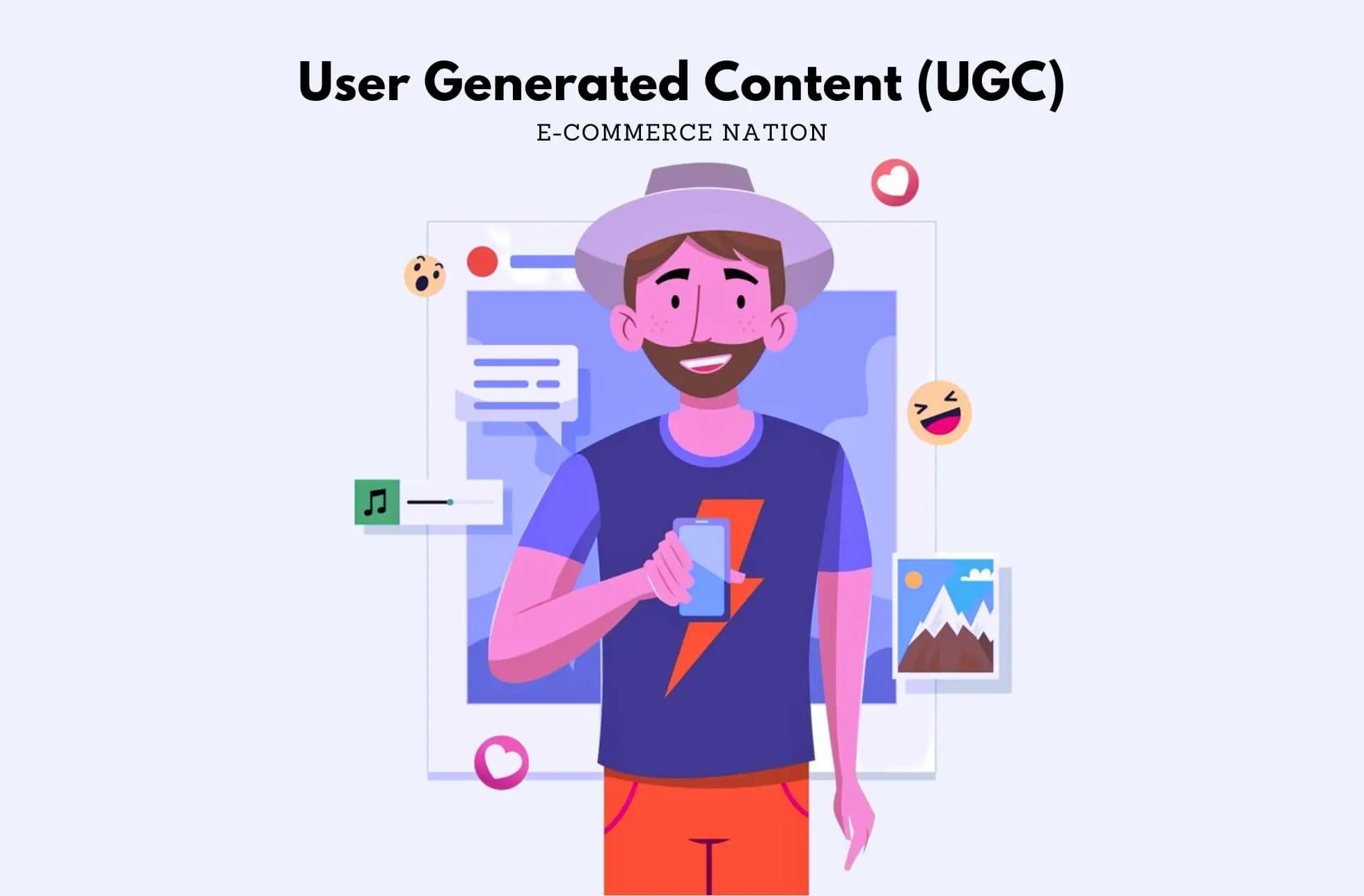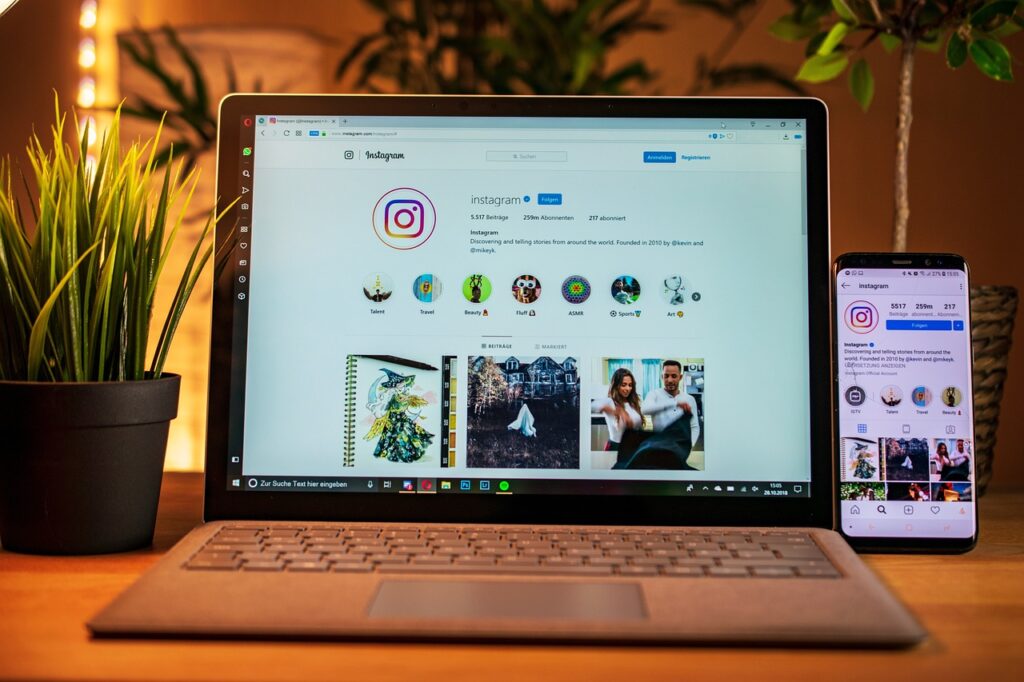In today’s digital world, companies of all sizes and sectors have an online presence. That makes the competition for shoppers’ attention fierce. Out of the 2.1 million ecommerce businesses in the US, only a fraction of them will be able to attract enough customers and grow online sales.
As an ecommerce merchant, you’ve probably figured out that Digital marketing is critical for the long-term success of your online store. But what exactly is digital marketing, and how do you do it? Let’s find out.

What Is Digital Marketing?
In pre-Internet days, businesses could promote themselves through billboards, television spots, direct mail, or store window displays. But with commerce and consumers (and, let’s face it, most of our attention) moving to the online world, marketing and advertising have moved online, too. Marketers can now reach their target audience via digital channels such as social media, search engines, websites, text messages, and email, and these comprise what we think of as digital marketing or online marketing.

Why You Need Digital Marketing
Though the traditional channels are still in play, the digital marketing world offers several advantages.
With online marketing you can reach global audiences.
Personalization allows you to target and segment more effectively.
Efficiency and automation let you do more with less marketing budget, even with a small marketing team.
Your brand can attain greater visibility across digital channels.
Software makes adopting digital marketing strategies faster and easier.
You can communicate with customers more rapidly and frequently.
Data collection and analysis enables your business to make better decisions.
Top Digital Marketing Tips
Emotive helps ecommerce businesses harness the power of texting as a key component of a successful digital marketing strategy. But we know there’s more to it than just texting, so we’re sharing our best digital marketing tips with you.
1. Embrace AI and Automation

In today’s fast-paced digital landscape, integrating AI and automation into your marketing strategy can significantly enhance efficiency, personalization, and decision-making. Here’s how you can leverage these technologies:
Benefits of AI and Automation:
Enhanced Customer Insights:
- AI can analyze large datasets to identify customer behavior patterns, preferences, and trends, enabling more informed marketing strategies.
Personalized Marketing:
- Use AI algorithms to tailor content and product recommendations based on individual customer preferences, increasing engagement and conversion rates.
Improved Efficiency:
- Automate repetitive tasks such as email campaigns, social media posting, and data analysis, freeing up time for strategic planning and creative work.
Predictive Analytics:
- AI can forecast future customer behaviors and trends, helping businesses make proactive marketing decisions.
Chatbots and Customer Support:
- Implement AI-driven chatbots to provide instant customer support, answer queries, and guide users through the purchasing process 24/7.
Strategies for Implementation:
Automate Email Marketing:
- Use platforms that offer automation features for personalized email campaigns based on user behavior, such as abandoned cart reminders or product recommendations.
Utilize AI Tools for Content Creation:
- Leverage AI writing tools to generate content ideas, assist in writing, or optimize existing content for SEO.
Deploy Chatbots:
- Integrate chatbots on your website and social media to handle customer inquiries, provide information, and facilitate purchases.
Analyze Data with AI:
- Use AI analytics tools to monitor campaign performance, customer interactions, and market trends, allowing for real-time adjustments.
Optimize Ad Campaigns:
- Implement AI-driven platforms to manage PPC campaigns, optimizing bids and targeting based on performance data.
Experiment with Dynamic Pricing:
- Use AI algorithms to adjust pricing in real time based on demand, competitor pricing, and customer behavior.
2. Create Compelling Content
One of the most important aspects of digital marketing is creating compelling and relevant content that draws people to visit your website. Clickbait content might get shoppers’ attention, but if it doesn’t provide value to your target audience, they’ll likely leave before making a purchase.
Valuable content can be in the form of blog posts, videos, infographics, or social media posts. Following are some marketing tips for effective content creation:
Post content regularly.
Create content that’s entertaining, informative, and empathetic.
Ensure your content is original and reflects your brand values.
Make use of infographics and video.
Customize content for different digital platforms.
Consider asking customers to create user-generated content, featuring your products.
Don’t skimp on photography or design: aesthetics matter.
Don’t just promote your products: your content should speak to customers’ needs and desires.
Maintain consistent branding so shoppers can more easily identify you.
3. Video Content Dominance
Video content has become a powerful tool in digital marketing, offering a dynamic way to engage audiences and convey messages effectively. Here’s why it’s crucial and how to leverage it:
Why Video Content Matters:
- High Engagement Rates: Videos are more likely to capture attention and encourage interactions compared to text or images.
- Enhanced Retention: Viewers retain information better when presented through video, making it an effective medium for storytelling and product demonstrations.
- Increased Conversions: Video can significantly boost conversion rates, as consumers are more likely to purchase after watching a product video.
- SEO Benefits: Video content can improve your search engine ranking, especially on platforms like Google and YouTube, driving more traffic to your website.
Types of Video Content to Create:
Product Demonstrations:
- Showcase how your products work, highlighting features and benefits to help potential customers make informed decisions.
Tutorials and How-To Videos:
- Provide value by teaching your audience how to use your products or solve problems related to your niche.
Customer Testimonials:
- Share positive experiences from satisfied customers to build trust and credibility.
4. Voice Search Optimization
Voice search is rapidly changing how consumers find information online, making it essential for businesses to optimize their content for this technology. Here’s what you need to know about voice search optimization and how to implement it effectively.
Why Voice Search Matters:
- Growing Popularity: With the rise of smart speakers and voice-enabled devices, more people are using voice search for everyday queries.
- Conversational Queries: Voice searches tend to be more conversational and longer than typed searches, reflecting how people naturally speak.
- Mobile Usage: Voice search is particularly popular on mobile devices, making it crucial for local businesses and ecommerce sites.
Strategies for Voice Search Optimization:
Focus on Natural Language:
- Use conversational language in your content. Consider how people phrase questions verbally and incorporate those phrases naturally.
Optimize for Long-Tail Keywords:
- Target longer, more specific phrases that people are likely to use in voice searches. For example, instead of “shoes,” consider “best running shoes for women.”
Create FAQ Pages:
- Develop content that answers common questions related to your products or services. This format aligns well with voice search queries.
Enhance Local SEO:
- Optimize your website for local search, as many voice searches are location-based. Ensure your business information is accurate on platforms like Google My Business.
5. User-Generated Content (UGC)

User-generated content (UGC) refers to any content created by consumers or users about your brand, products, or services. It can take various forms, including reviews, social media posts, photos, videos, and testimonials. Leveraging UGC is a powerful way to build community, enhance trust, and boost engagement. Here’s how to effectively use UGC in your marketing strategy.
Why UGC Matters:
- Authenticity and Trust: UGC provides social proof, helping potential customers feel more confident in their purchasing decisions by showcasing real experiences.
- Increased Engagement: Content created by users often generates higher engagement rates compared to branded content, encouraging interaction and shares.
- Cost-Effective Marketing: UGC reduces the need for expensive content production, allowing brands to showcase genuine customer experiences without significant investment.
Strategies for Encouraging and Utilizing UGC:
Create Hashtags:
- Develop a unique hashtag for your brand and encourage customers to use it when posting about your products. This makes it easy to find and share their content.
Run Contests and Challenges:
- Host contests that incentivize customers to create and share content featuring your products. Offer prizes or features on your brand’s social media channels to encourage participation.
Showcase UGC on Your Platforms:
- Feature user-generated content on your website, social media, or marketing materials. This not only highlights your community but also encourages others to contribute.





